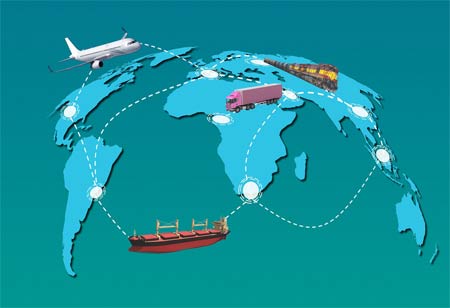THANK YOU FOR SUBSCRIBING
THANK YOU FOR SUBSCRIBING

By
Logistics Transportation Review | Wednesday, February 28, 2024
Stay ahead of the industry with exclusive feature stories on the top companies, expert insights and the latest news delivered straight to your inbox. Subscribe today.
Seaports are vital for global trade, requiring strategic investments, technological integration, regional cooperation, and sustainable infrastructure. The International Maritime Organization aims for a 50 percent emissions reduction by 2050.
FREMONT, CA: In today's globalized world, resilient and adaptable supply chains are crucial for economic success, highlighted by recent events like the pandemic. Seaports are vital in facilitating this flow, serving as critical hubs that connect regions and maintain the uninterrupted transportation of essential goods.
The Role of Seaports in Building Resilience
Gateways to Global Trade: The significance of maritime transportation in facilitating global trade cannot be overstated, with over 80 percent of trade volume reliant on seaports. Seaports play a pivotal role in international commerce, serving as the linchpin for the efficient movement and timely delivery of goods, thereby preventing disruptions in the broader supply chain.
Redundancy and Diversification Strategies: Strategic investments in port infrastructure become imperative to enhance the resilience of global trade networks. The development of multiple ports and diversified shipping routes introduces redundancy into the system, allowing for the rerouting of shipments and minimizing the impact of disruptions at specific locations. This strategic approach contributes to the robustness of the overall trade ecosystem.
Technological Integration for Operational Efficiency: Embracing technological advancements is paramount for optimizing port operations and enhancing visibility across the supply chain. Integrating digital technologies such as blockchain, artificial intelligence, and real-time data analytics significantly improves planning, response times, and decision-making during disruptions. This forward-looking approach ensures that seaports remain at the forefront of efficient and resilient global trade.
Evaluating Connectivity Initiatives
Facilitating regional cooperation is essential for optimizing cross-border trade and bolstering connectivity. Collaborative efforts among nations to standardize regulations, procedures, and infrastructure contribute to the efficient movement of goods. An exemplary initiative in this regard is the Asian Infrastructure Investment Bank's (AIIB) strategic investments in port development projects. Sustainable infrastructure is equally critical, necessitating the construction of climate-resilient port facilities capable of withstanding the escalating frequency and intensity of extreme weather events. This involves integrating green technologies to mitigate emissions and enhance overall sustainability. Additionally, establishing efficient land-based transportation networks is paramount for seamless goods movement between ports and their hinterlands. Strategic investments in roads, railways, and logistics hubs are pivotal in augmenting supply chain efficiency and resilience on a broader scale.
Recent Developments
The International Maritime Organization (IMO) has implemented a comprehensive strategy to mitigate greenhouse gas emissions from the maritime industry, with a specific target of achieving a minimum 50 percent reduction by the year 2050. This initiative underscores the escalating emphasis on fostering sustainable port development worldwide. In parallel, the World Bank's Global Logistics Performance Index (LPI) remains instrumental in systematically monitoring and assessing the efficiency of logistics operations across diverse nations. The LPI is a critical tool for benchmarking performance, offering valuable insights to facilitate targeted enhancements in port connectivity and logistical frameworks.
Looking Forward
The imperative for resilient and interconnected seaports has reached unprecedented levels. Stakeholders can cultivate a more durable and adaptable global supply chain through proactive investment in infrastructure and technology and fostering regional cooperation. Such measures are essential for effectively navigating the worldwide environment and guaranteeing the uninterrupted flow of goods amidst potential future disruptions.
I agree We use cookies on this website to enhance your user experience. By clicking any link on this page you are giving your consent for us to set cookies. More info





